800th Anniversary of My Hometown Middelburg (Ep. 2) - History
The History of the city of Middelburg, the Netherlands
Read the previous episode here.
Before I address all the current features and sights of Middelburg, let's first take a look at its history. The city of Middelburg was officially awarded city rights in the year 1217, and thus it was no longer just a town. Over the past 800 years, the city has grown to what it is today. Let's take a look at some of the milestones in the history of the city.
Middelburg before 1217
When you walk around the city center, you see and feel that it is higher than its surroundings. That is where the origins of the city were. From the earliest of times the sea was the local population's biggest enemy. From the 9th century on, the people also had to deal with Vikings that looked for plunder. In the year 841 they even settled down on the island of Walcheren, where Middelburg was situated at the time. To not let this happen again, three boroughs were built to defend the coast: the South borough (Soudurg), the Dune borough (Domburg) in the North, and the Middle borough (Middelburg) in between the other two.
Middelburg, Souburg, and Domburg on the map
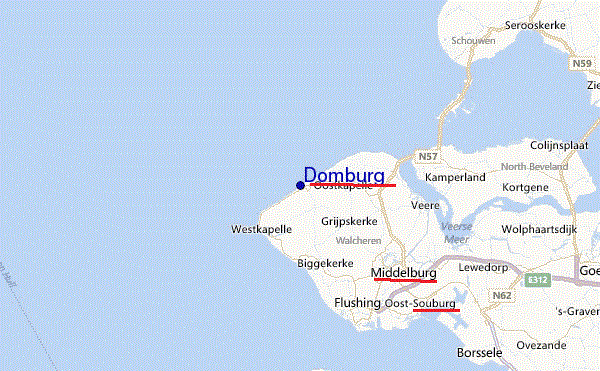
source
From the year 1000 the Viking threat was gone and Middelburg was able to develop a religious center with a monastery, although there had probably been a church 100 years before, already. Over the years, the abbey must have stood in the same place where it is located now. The Middelburgian 'Our Sweet Lady' abbey expanded strongly over the years. It was a well organized society whose influence reached far.
The abbey today
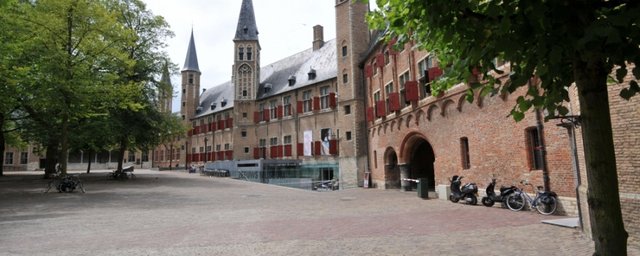
source
1217: City Rights
For centuries the counts of Flanders and Holland fought over Zeeland. It was a very strategic defense point and also provided grain for the region. From the year 1167 Middelburg was under Flemish jurisdiction. In 1217 the city received city rights from countess Johanna of Flanders and count William I of Holland together. From now on, the city was allowed to build city walls, levy tolls, tax, and have its own justice system. Later, the city rights were expanded by William II, count of Holland and Zeeland and king of the Holy Roman Empire, who let the city expand as well.
1452: Town Hall
In the year 1452 started the building of the town hall, which would be a combination of the new town hall, meat market, and sheet market. The town hall was completed in 1458 and was mainly built by Flemish architects. Over the next 200 years, it has been transformed and expanded multiple times into what it looks like today.
The town hall and market square
.jpg)
source
1602: The Dutch East India Company
In the 16th century, William of Orange led a rebellion against the Spanish king, Philip II. This rebellion turned into the infamous 80 years' war. In contrast to most Zeelandic cities, Middelburg chose to remain loyal to the Spanish, but due to a famine they had to give in. Some ten years later, the city of Antwerp fell to the Spanish, which divided the Northern and Southern Netherlands. Many people fled from Antwerp to the North and brought their skills in trading with them. Because the Spanish and the Portuguese obstructed the trade in spices, prices were high, which drove many Dutchmen to form trading companies. In 1602, many of them fused into the Dutch East India Company.
1720: Slave Trade
Between 1625 and 1803 the Dutch have shipped some 550,000 African slaves to the Americas. This is a lot, although the total amount of slaves traded by all countries combined is about 21 million. For the Netherlands, Middelburg became the main port to ship slaves from. Under the French occupation (1795-1814) more and more people started to reject slavery because of Christianity, the Age of Enlightenment, and economic reasons. In 1814 it was prohibited completely.
The administrative offices of the East India Company still exist today
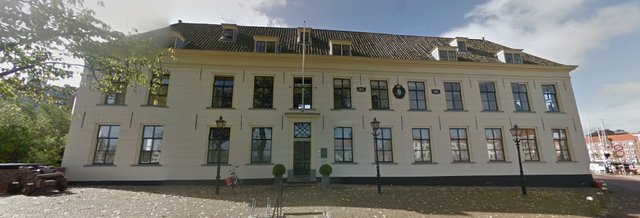
source
1811: The Justice Court
Due to the French occupation, the Netherlands adopted a more centralized government apparatus. Therefore, regions like Zeeland and cities like Middelburg lost many of their power. Emperor Napoleon brought much damage to Middelburg through his economic policy, but he also introduced the modern justice system. Thus, the decentralized justice system was replace by a more centralized, national system.
The court building today
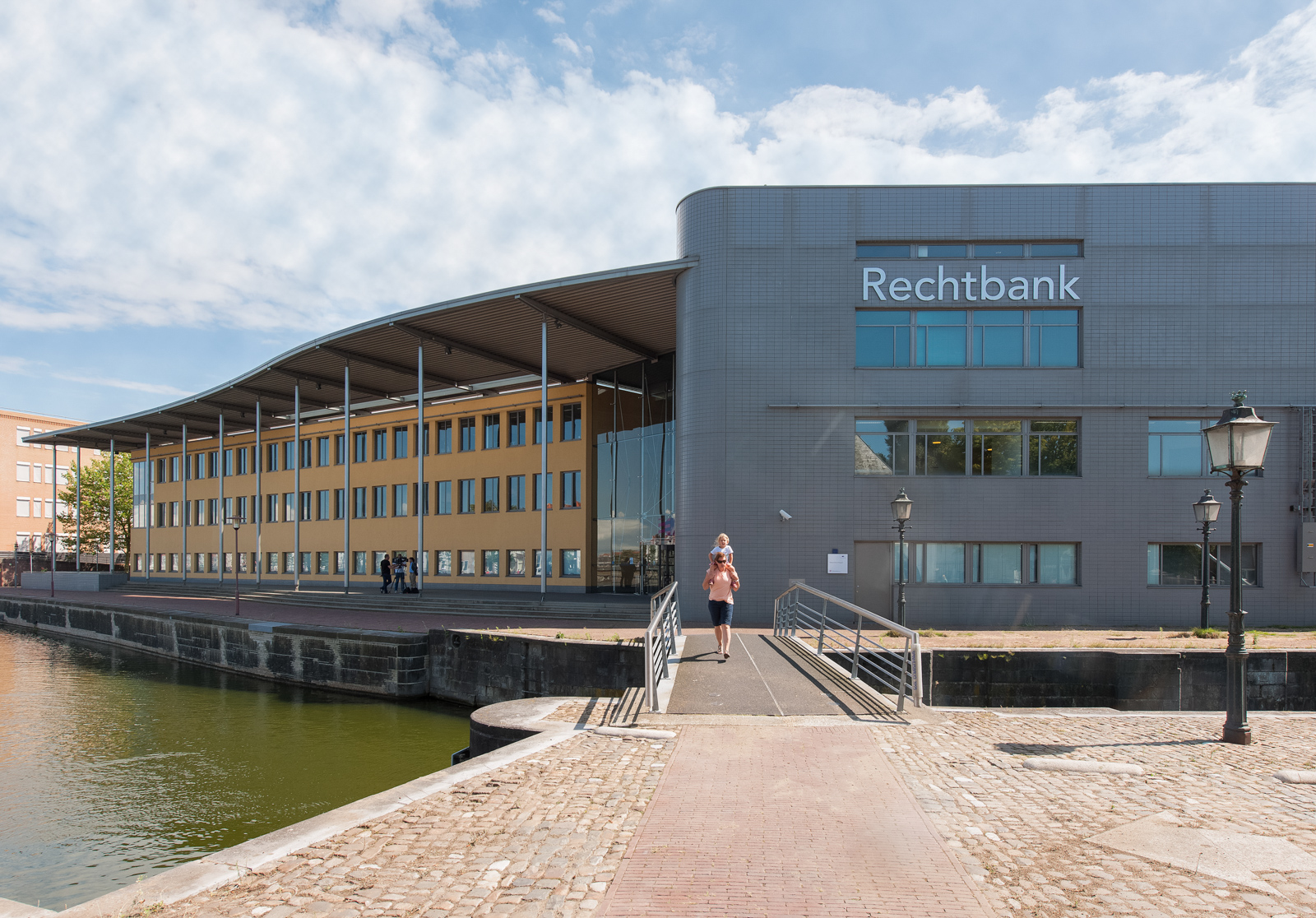
source
1940: The Big Fire
May 10th, 1940, the Germans invaded the Netherlands. Four days later, after the bombing of the city of Rotterdam, the Dutch crown capitulated. Because the French were in Zeeland, the province was exempt from the capitulation. The French dug in and the German Waffen-SS attacked them with their artillery. Middelburg was one of the targets of the Germans. It was not a large bombardment, but the whole city caught on fire. The fire took 40 days to put out. In total, 537 buildings and 18 public buildings were destroyed, among which the churches of the Lange Jan and the abbey, and the town hall. Moreover, the provincial library lost half of its books. Much of the city had to be rebuilt.
Middelburg after the big fire of 1940
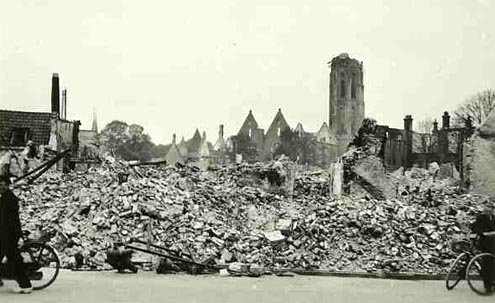
source
2004: The University of Middelburg
Over the centuries Middelburg has experienced many attempts to set up higher education. In 2004, queen Beatrix founded the Roosevelt Academy, which is now called the University College Roosevelt. This small scale liberal arts and science college was formed by the University of Utrecht and High School of Zeeland. Currently, some 600 students are following the 3-year bachelor track in the old town hall.
Students graduating from the Roosevelt Academy
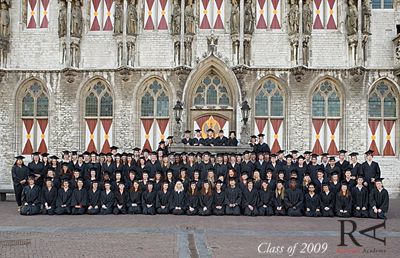
source
That's all folks!
If you like this series, be sure to follow, upvote and resteem! I'd really appreciate it.
All information comes from the book 'De geschiedenis van Middelburg in 25 stappen'.
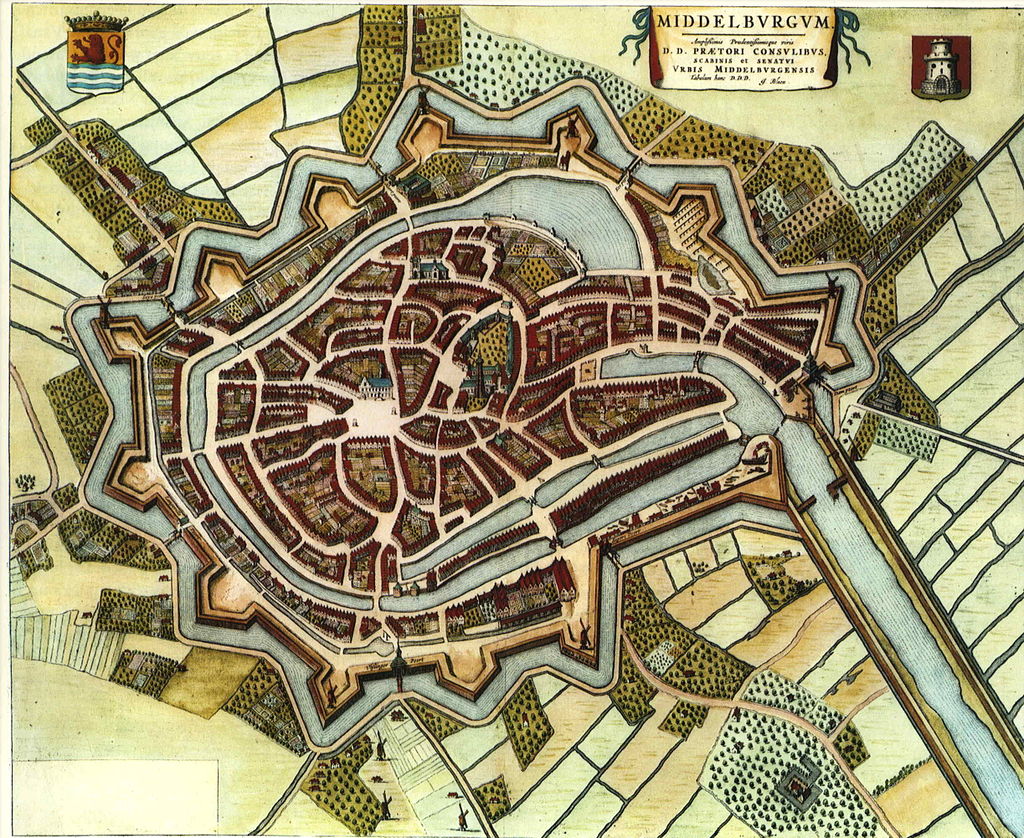
Great insights and information. Well written piece!
Thank you!
Congratulations @rvanstel! You have completed some achievement on Steemit and have been rewarded with new badge(s) :
Click on any badge to view your own Board of Honnor on SteemitBoard.
For more information about SteemitBoard, click here
If you no longer want to receive notifications, reply to this comment with the word
STOPIf you want to support the SteemitBoard project, your upvote for this notification is welcome!